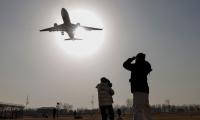LAHORE: Pakistan’s economy is again behaving against the global trends. Pakistan’s growth was moving in reverse gear when the global economy was moving up; post pandemic the global economy is in tatters but Pakistan’s is showing signs of remarkable recovery.
Pakistan’s macroeconomic indicators are in the best shape ever since this government assumed power. The exports are increasing, the imports are still declining, interest rates are low, and inflation is in single digit. Most surprisingly workers’ remittances in July are the highest ever inflows in a month. On the productivity front the textile and auto sector have shown robust growth in the first month of this fiscal.
If we look around our region each country is expected to shed its GDP in 2020-21 including India and Bangladesh. It is a puzzle that our economic performance that was the worst pre-COVID-19 seems to be riding high now. The government has not introduced any reforms in the past six months. The policies that it put in effect at the start of its tenure failed to deliver to date and are still in vogue. The indicators are rosy now but the plight of the masses continues to deteriorate. The prices of two major food items, namely wheat and sugar, have hit new highs.
Some large industries like cement, auto and textile have shown promise but generally the manufacturing sector is still under severe stress. The small and medium enterprises have still not revived. Many are unlikely to resume production. The SMEs provide 65 percent of the manufacturing employment and since they have not revived, the unemployment rate is still very high. The lot of poor would not improve with creation of jobs. Construction activities have increased that has provided jobs to the unskilled.
Experts are concerned about duration of current conomic upturn. The surge in car sales is in the luxury car section affordable only to the most affluent. They suspended their buying for few months during the pandemic but they always had the resources available for this purpose. They are making up for the time lost. The small car section that caters to the middle class consumers is still subdued. The affluent segment of the society has the capability to absorb any increase in car rates but the middle class cannot afford to absorb hefty increase in rates of smaller cars. This segment has suffered job losses as well as reduction in salaries that has already reduced its consumable surplus. Not only cars but they are still very cautious in spending money on items that are not essential.
The growth trend would have to be seen in the context of job creation. The unemployment rate has to go down to level prevalent in 2017-18. Otherwise the poor would continue to suffer. We need to attract investors in some Greenfield projects that would ensure creation of new jobs. Power and energy rates in Pakistan are very high.
The government only provides subsidised power to five designated exporting industries. All other exports as well as the domestic manufacturers have to buy electricity at very high tariff. For some industries it adds to the cost of doing business. This includes energy intensive industries like steel products manufacturers, glass manufactures, plastic product manufacturers and many others. High cost of production results in higher product cost that depresses demand. Investors try to stay away from markets where power rates are substantially high.
As far as remittances are concerned we have seen increase in both June and July. In view of the current uncertainty in crude oil rates and the impact of COVID-19 the countries in Gulf region are trying to shed jobs. Gulf region employees major chunk of Pakistani workers. The remittances have increased from this region sharply in past two months. It could be due to the government measures to attract remittances through formal channels or because the workers that have left their jobs are sending back all their savings. The surge may continue till September after which we may see sharp tapering off. If overseas Pakistani workers lost jobs in next three months there would also be an influx of job seekers from abroad. We should keep our fingers crossed till that time.
The rupee stability is another issue. Despite huge dollar inflows (borrowing mainly) import compression, higher exports and higher remittance the rupee has not stabilised. Unstable rupee deters investors and badly impacts inflation. The crude oil prices are a factor on which the government has no control. However after massive devaluation it is impossible to pass on the benefit of lower crude oil prices to the consumers. It is also inevitable not to increase prices if the global crude oil rates increase.
A representational image of a protest in Turkey. — Reuters/FileANKARA: Thousands of people protested in Turkey’s...
This undated file photo shows processed gold bars. — AFP/FileKARACHI: Gold prices remained unchanged on Saturday in...
Open office workspace is seen in this image.— Reuters/FileLAHORE: Pakistan faces the critical challenge of creating...
Canada's Finance Minister Dominic LeBlanc speaks during Question Period on Parliament Hill in Ottawa, Ontario, Canada,...
A staffer poses with 2015 edition of the 100 renminbi notes at the Bank of China Tower in Hong Kong, China November...
The Federal Board of Revenue building can be seen. — X@FBRSpokesperson/FileKARACHI: The Regional Tax Office -1...







